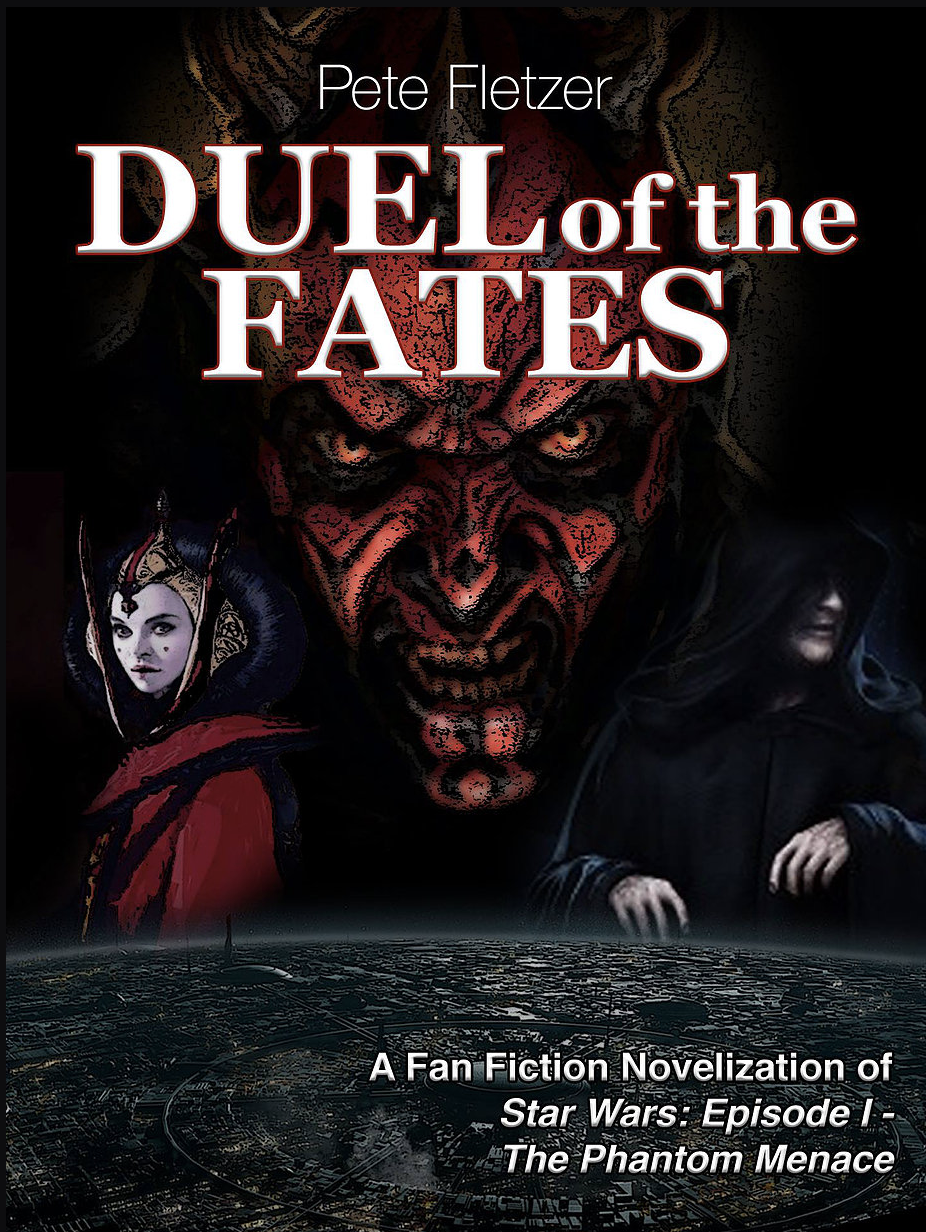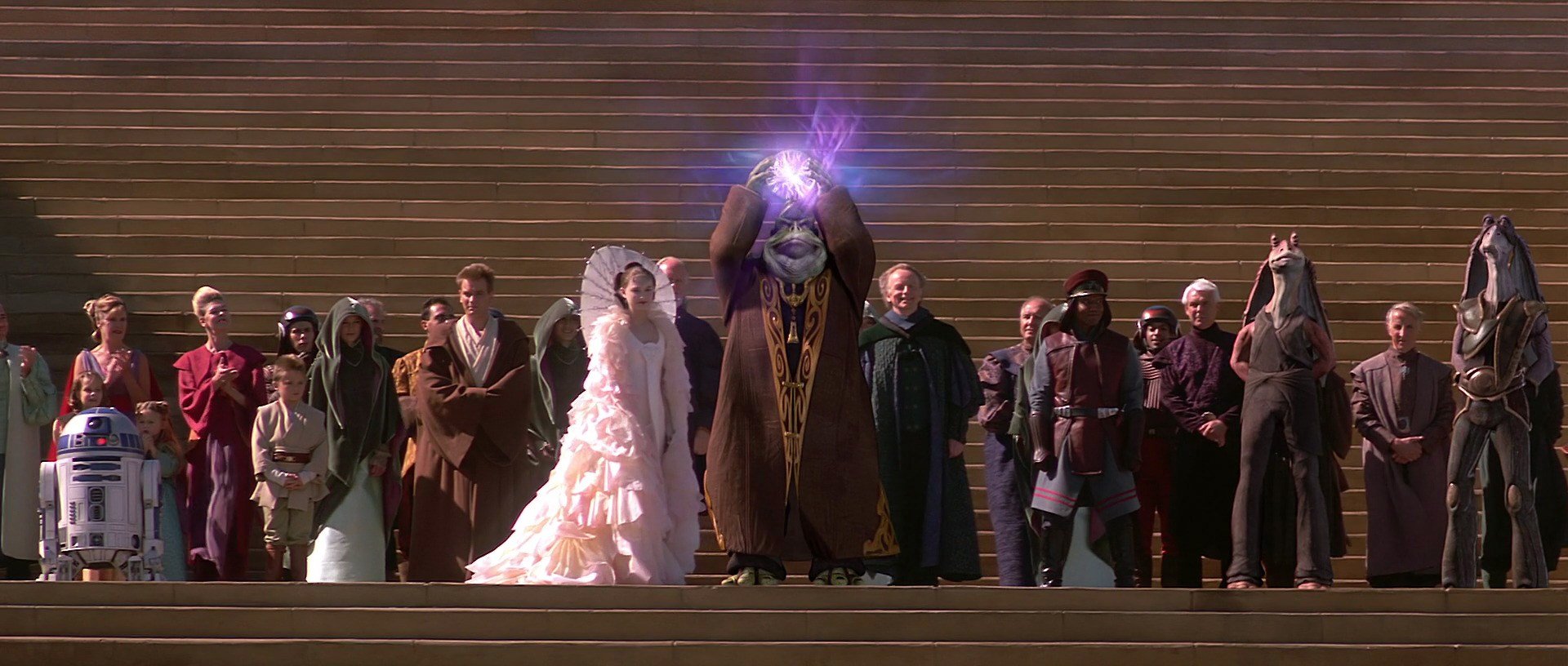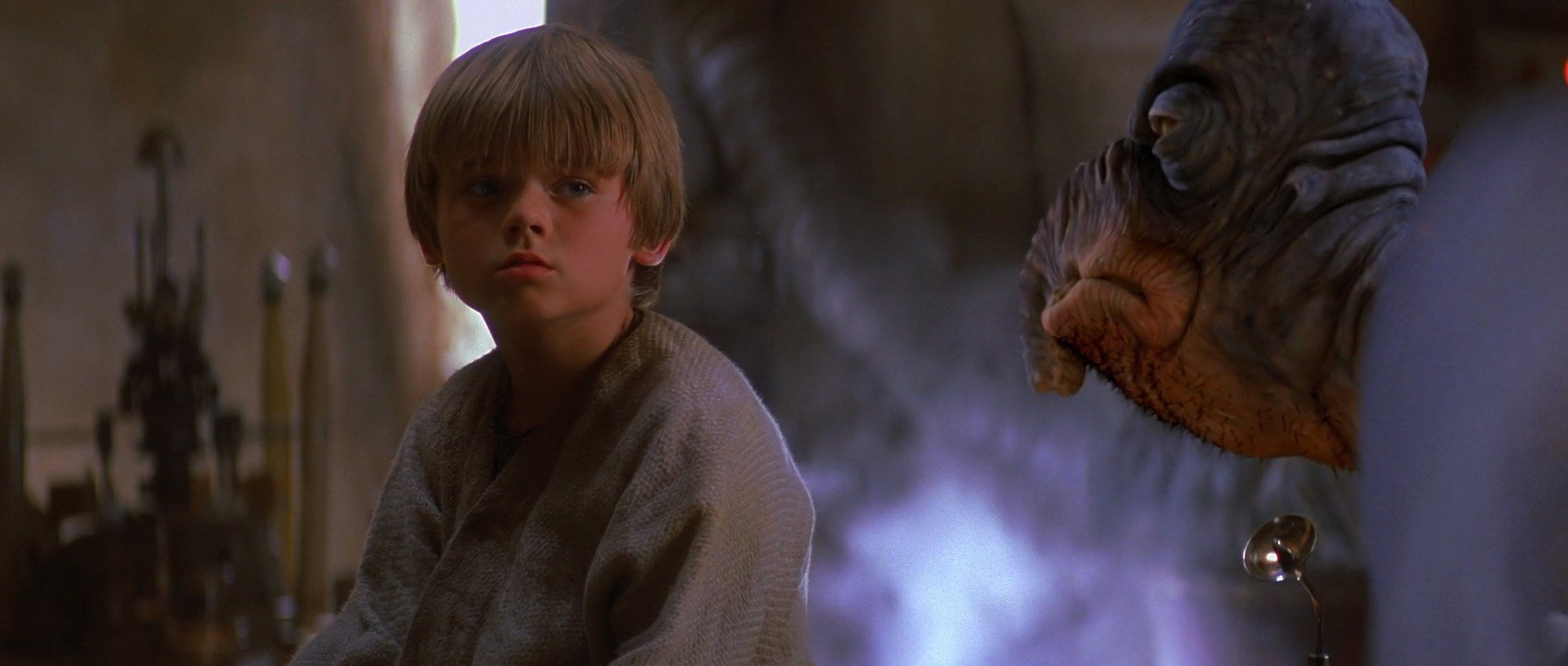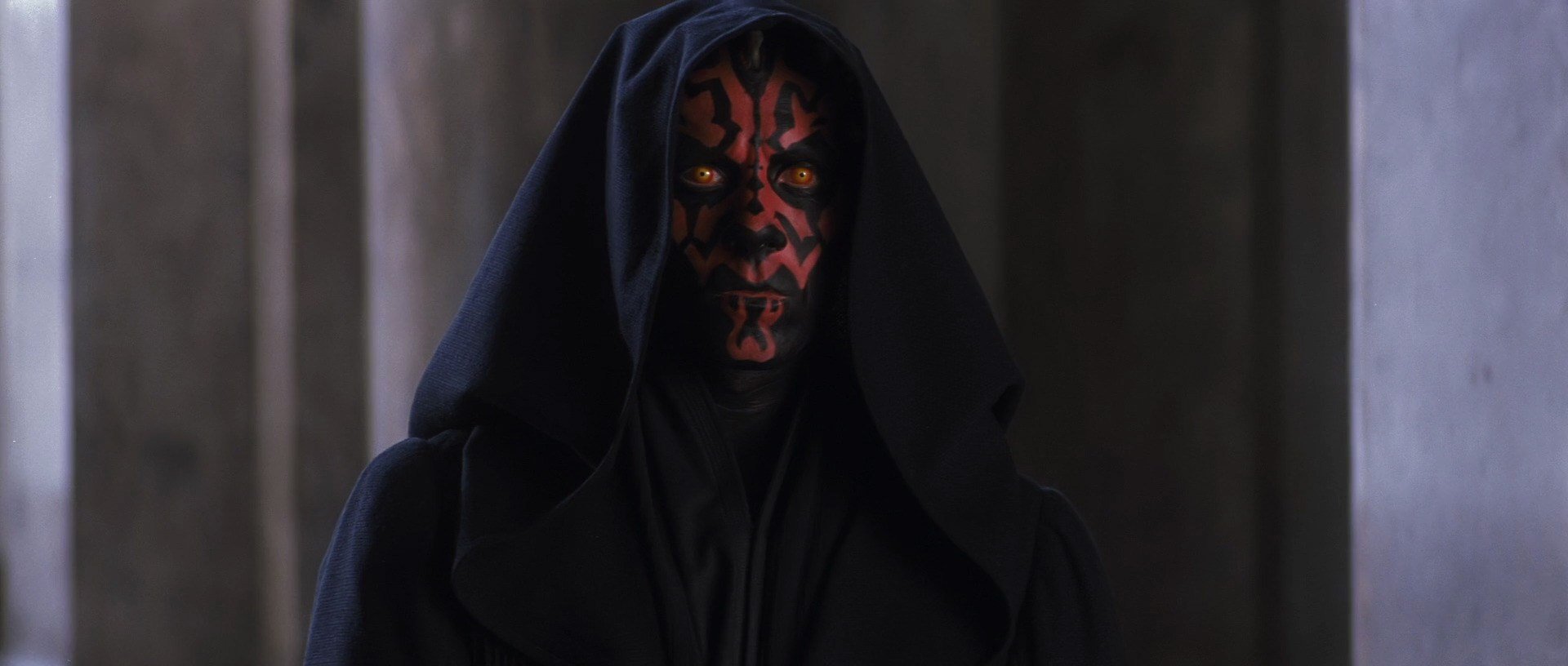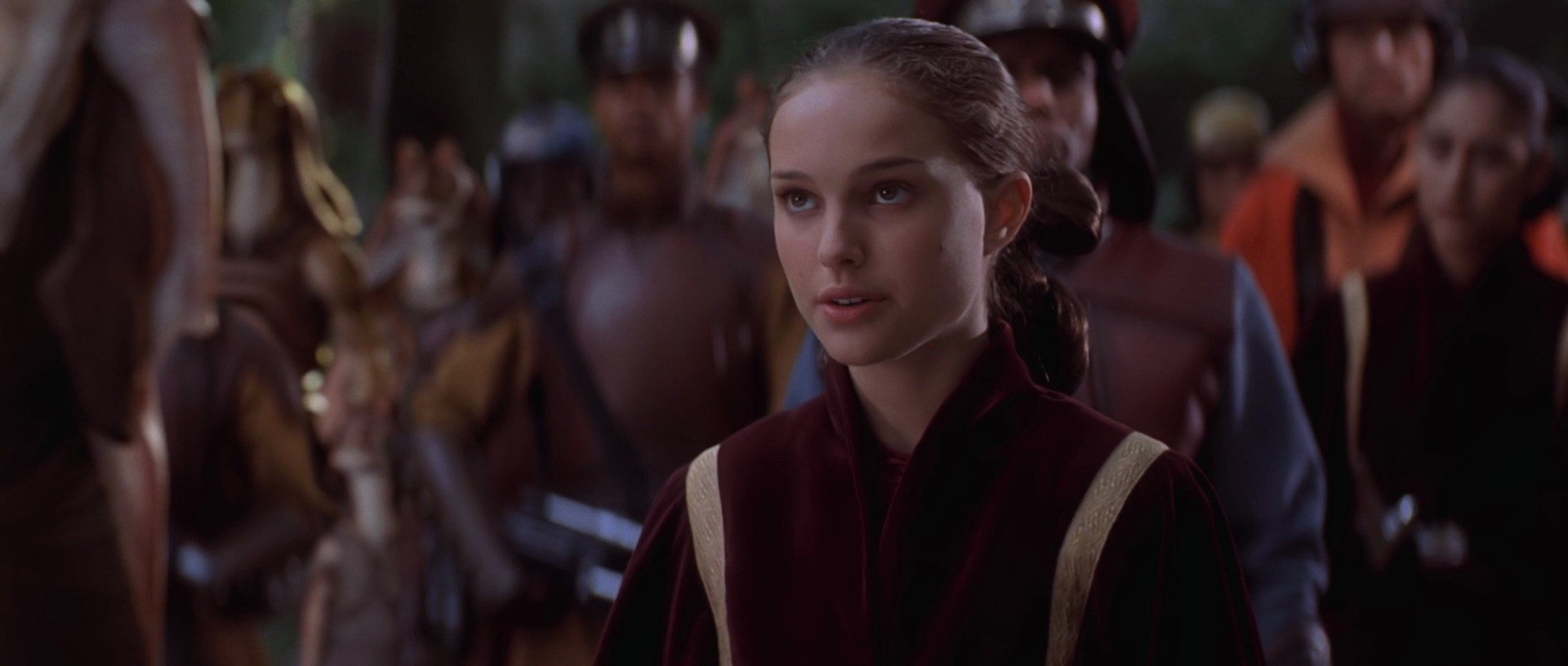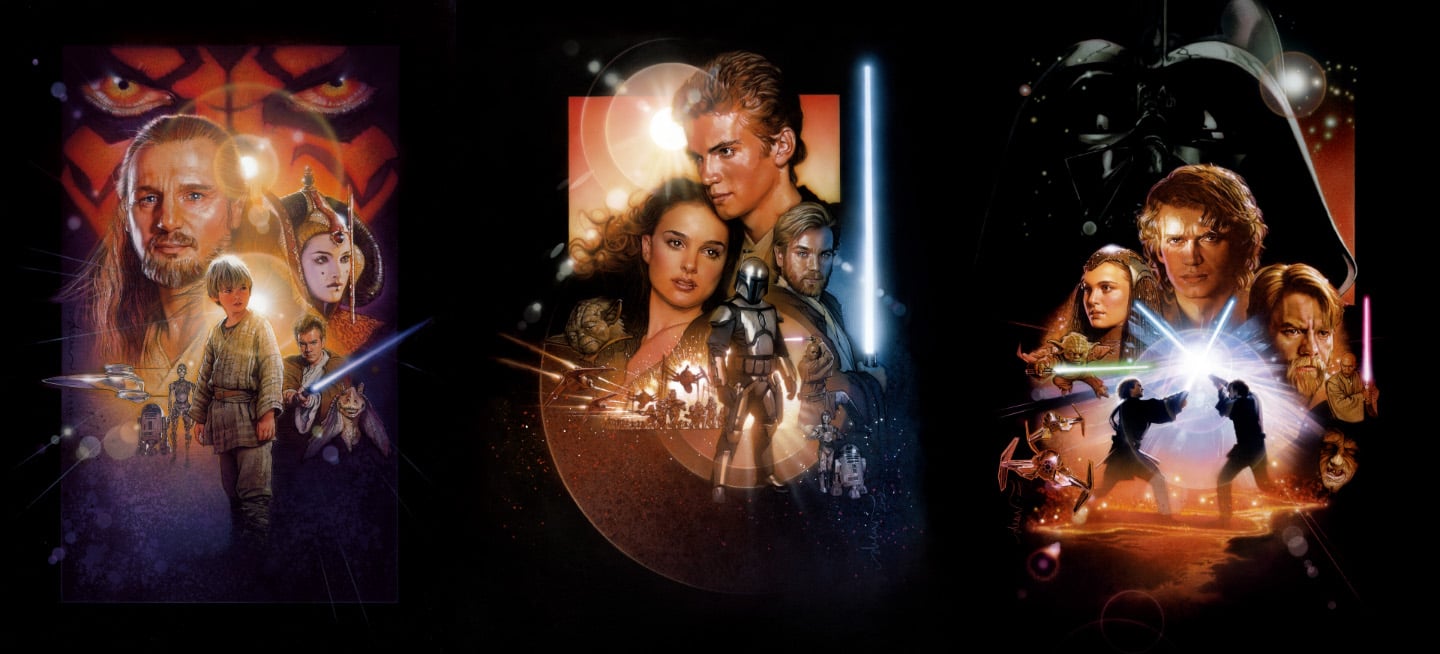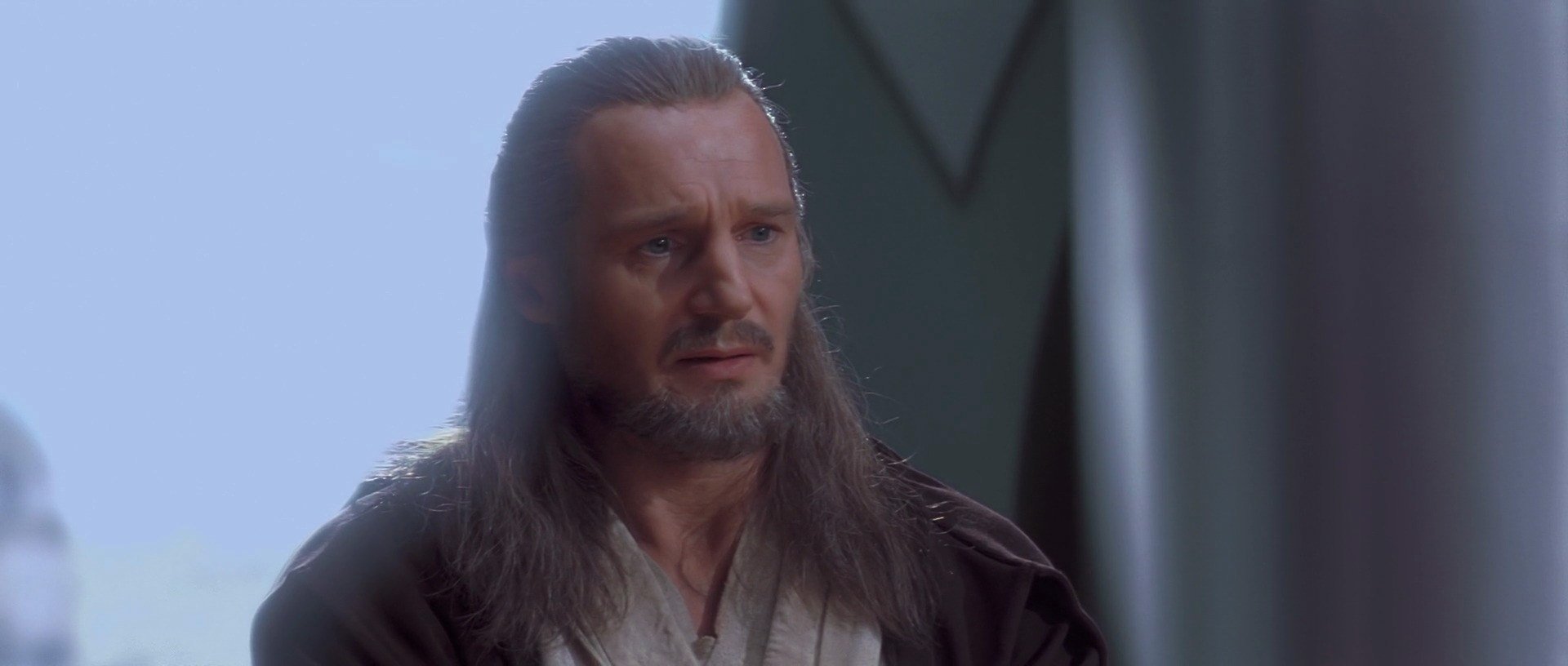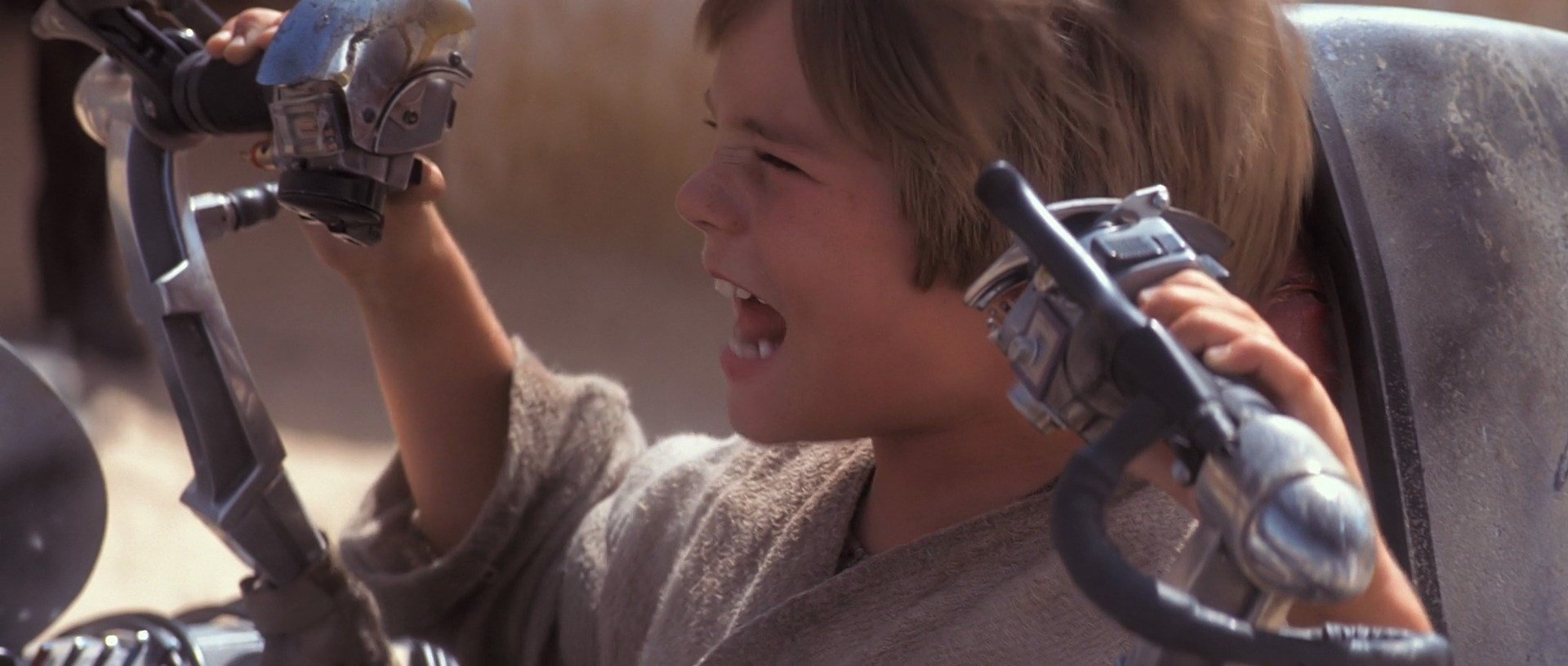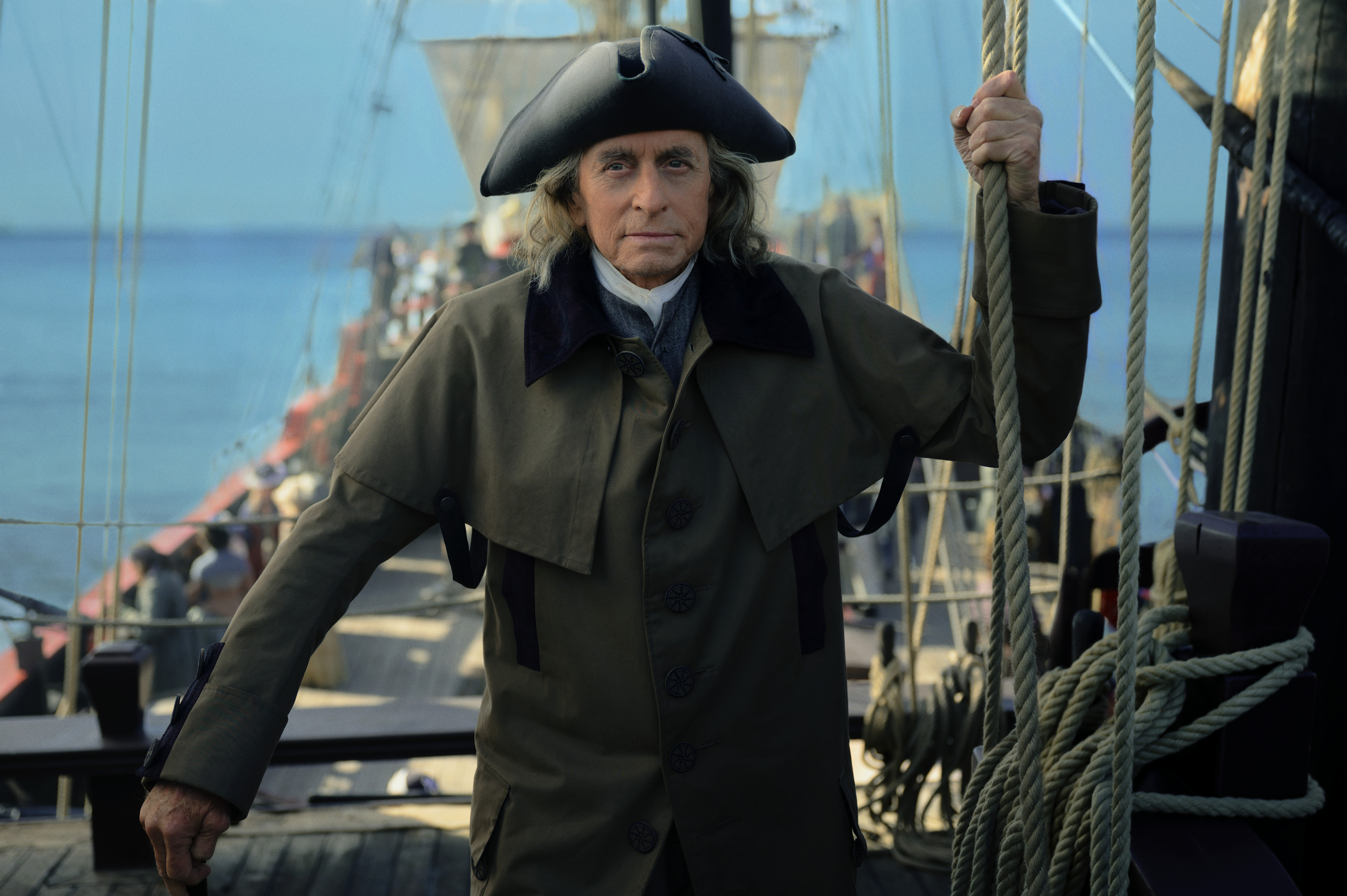Review – A Fan Fiction Love Letter To The Prequels In Pete Fletzer’s Duel of the Fates
Pete Fletzer covered Star Wars in the years leading up to The Phantom Menace, what some of us remember as the wilderness years. The novels and comic books that started with the release of Timothy Zahn’s Heir to the Empire were quite restricted in terms of what they could explore about the Jedi heritage and the Skywalker legacy. Though they were rich in storytelling, they all had faced the prospect of their characters and stories eventually adhering to the promised prequels George Lucas had tucked away in his head. Though The Phantom Menace proves it’s a widely loved addition to the Skywalker saga, many of the fans who pored over the novels, comics, and original trilogy hoped to get a little bit more out of the Jedi’s story, Darth Maul, and the state of the galaxy. That’s not a criticism of George’s film, just a statement that it’s a difficult task to bring new fans into a universe while giving older fans every tidbit of information they want. With recent releases like E.K. Johnston’s Queen’s Shadow and Claudia Gray’s Master & Apprentice, fans have been given more insight into what drove specific events and characters surrounding The Phantom Menace. Fletzer, on his own time and ambition, makes his contribution with his fan fiction novelization, Duel of the Fates – an expanded retelling of The Phantom Menace. And it’s very good.
Let’s get this right out the way: It’s not canon and Fletzer doesn’t pretend that it is. As I revisit more of my old Legends books and after hearing Timothy Zahn sum up his view on many of his own Star Wars contributions becoming Legends, I don’t think it’s terribly important your enjoyment of a good Star Wars story should depend on whether it lines up with every detail in the canon. That’s just my own opinion and not meant to be critical of folks who only choose to invest their time in canonical tales. Both sides of my fan-brain are in constant conflict about this, because I love digging through the munitia of canon to find details I’d missed that connect stories; but, when it comes down to it, a good Star Wars story is a good Star Wars story. Duel of the Fates is a good Star Wars story that captures the spirit of the original film, while filling in some of the gaps about Darth Maul, Qui-Gon, Obi-Wan, Padme, Anakin, Shmi, and Palpatine. There’s a good chance if you felt your favorite Phantom Menace character’s story felt at all lacking, Fletzer probably expanded on it considerably. So, I would encourage any canon purists (that’s not a criticism, I count myself among you) to let go of that and just settle in for some great Star Wars storytelling. To borrow a line from Timothy Zahn, think of this as a campfire story, someone in a galaxy far, far away is telling about the events of The Phantom Menace. It might not line-up exactly with every little detail, but Fletzer wrote one heck of a good novelization based on George Lucas’ screenplay.
Fletzer himself characterizes this novelization as his love letter to Star Wars. I think any reader would walk away from Duel of the Fates feeling that way. What impressed me so much about Duel of the Fates was not only a great retelling of a film I’ve grown to love but the admiration and respect Fletzer’s writing pays to so many characters in the film. It’s a wonderful tribute to George Lucas’ ability to create characters that fans relate to on so many levels. It’s clear to me Fletzer was affected by these characters and felt that maybe some of them could’ve used some extra details; or, even better, Fletzer shares his own ideas and head-canon stories about them and why he loves them so much. That said, it’s a very pure examination of the story and an expansion of the roads that lead the characters to the events in The Phantom Menace. I don’t mean to make Fletzer’s writing sound piecemeal or as if it’s some sort of meta-commentary on The Phantom Menace, because it’s a very coherent novelization that packs in so much content. Fletzer is a skilled writer and walking away from this I was amazed how much he was able to fit in without it slogging down the familiar plot.
The first four chapters of the novel take place before the events of The Phantom Menace, with the opening chapter focused on the fear Anakin and Shmi live with as slaves, not knowing if they’ll be separated and just the cruelty of bondage. Shmi knows her son is destined for greater things, but Anakin promises his mom he’ll never leave her, not realizing a parent’s love and hope for their child’s well-being transcends any need for companionship in the parent-child relationship. It’s a touching chapter that plants the seeds for the devastating final seconds they’ll share together in Attack of the Clones. The next chapter tells a tale of Sheev Palpatine recruiting Padmé as a nomination for Queen of Naboo, inserting himself as a mentor and trusted figure in her life. The chapter summarizes the events as swiftly as Palpatine is crowned Supreme Chancellor in the actual film. After that, we are taken to the lower levels of Coruscant, where Qui-Gon Jinn and Obi-Wan Kenobi take in a Force-sensitive baby from a less-than-desirable home. Qui-Gon and Obi-Wan have the unfortunate task of dealing with an unpleasant and beligerent father, somewhere between regretting giving up his child and accepting it. The scene is immediately juxtaposed with the final prologue chapter, Darth Maul recounting his own recruitment on Dathomir by Darth Sidious. It’s a vivid and brutal depiction of the tutelage that will bring the Zabrak a life filled with hate and misery.
I wanted him to be a seething weapon for Sidious that was fueled by hate; a monster who killed on command and enjoyed it. But I also knew a good story isn’t simply black and white. He also needed motivation and, it turns out, that also made him much more interesting to me. I played it all off of one line in the movie: “At last we will have our revenge.” In the film, there was something underneath it so I wanted to explore what that meant to him. There is so much passion and anticipation in finally revealing himself and having the chance to murder the Jedi. In the end, even though he is a dark, vengeful villain, I wanted the reader to at least understand where it comes from, making us want to see him defeated, but curious to see where his story goes. By the time I was done, I almost felt sorry for him.
The above quote was Fletzer’s response when I asked him which character’s story in The Phantom Menace he felt most compelled to expand upon. This characterization is eventually fleshed out in canon between The Clone Wars, Rebels, and the comics; though, I remember being an eighteen-year-old in the theater in 1999, feeling robbed as a disembodied Sith Lord we barely knew fell down a dark well. Fletzer does a fantastic job of capturing Maul’s deep hatred of the Jedi and voracious desire to immerse himself in the dark side and teachings of the Sith, all within the span of one story. Maul’s malice is so vivid in Fletzer’s words and his connection to the Force is really underscored and equally balanced with the description of his talents wielding that iconic, double-bladed lightsaber. Darth Maul remains a dark, evil presence that looms over everything just as he did in the original film.
The bond between Shmi and Anakin also got more of the limelight in Duel of the Fates. Pernilla August’s performance is brilliantly subtle onscreen and Fletzer’s writing conveys those subtleties. Shadowing the love between mother and son is a silent terror of Shmi Skywalker trying to raise a child on a lawless world like Tatooine, bound by slavery. The soft-spoken grace of Shmi is preserved on these pages. There’s nothing dramatically different from what we saw in The Phantom Menace, but Fletzer’s words describe such unconditional love and maternal devotion that I felt it was one of the strongest parts of the novel. As mentioned, we see the opposite tone in Jedi recruitment earlier in the novel in the bowels of Coruscant, so this contrast is extra weight. Shmi’s love provides Anakin with the foundation of goodness that makes his eventual heroism shine and his downfall so tragic.
Padmé also gets more attention, as we see her beginning in the Naboo political system, her rise to queen, and the eventual conflict pushing her under the protection of the Jedi. The invasion of Naboo is presented as a much more painful and grinding attack than it is onscreen. Fletzer definitely injects a real world unpleasantness to the military tactics of the Trade Federation. Padmé is just as tough and no bullshit as she was in The Phantom Menace. While Queen’s Shadow is still fresh in my mind, Fletzer writes Padmé with the strength I’d expect her to exude. Most teenagers would go looking for help or solutions about what to do in a crisis – but Padmé carries on and does what she needs to push through it all. I really enjoyed hearing her inner thoughts while Qui-Gon searched for solutions on Tatooine, as they shifted between her basic needs of survival and the possibility of atrocities being carried out on her people back on Naboo. Obviously the subtleties of that personal conflict are impossible to capture on film so it’s just one more bonus Fletzer adds to his adaptation.
Padmé also seems much more wary of Palpatine in this book. Her outlook of him evolves from the early chapters to the close of the book. At first she seems to admire him as a mentor and advisor. Palpatine helped propel her to the monarchy, so as many young people would relate to an advocate, Padmé initially looks to him for answers. By the end of the story, the queen has seen Palpatine’s own rapid rise to power and seems to greet it with much skepticism – as would any young politician committed to democratic process in a fledging democracy. By the end of the novel, the two really seem at odds, when Padmé demands the Trade Federation is held accountable for their war crimes but Palpatine seems to brush it off because the procedure to get justice is stifled by bureaucrats. I really enjoyed this subtle twist on their relationship.
Speaking of Palpatine…Darth Sidious is very much a presence in Duel of the Fates. There’s nothing subtle about his puppet master role. I don’t want to give away any spoilers here but Fletzer did a helluva job bringing the sinister Sith Lord to life. Not only do we get a look at Sidious’ duality, we also get a chance to see him interact with Plagueis. The Sith are everywhere in Duel of the Fates. I loved the additions Fletzer threw into their role moving the events of the story along, as if it were the beginning of a terrible avalanche they only knew was about to crash down upon the galaxy. Palpatine/Sidious are in fine form and you can almost see Fletzer smiling behind the keyboard as he wrote these chapters. It doesn’t have to be canon to get you excited for the Emperor’s return this December in The Rise of Skywalker.
Fletzer obviously had a lot to work with when going into this project. Here we are, nearly twenty years later, six-films beyond The Phantom Menace and there is a wealth of material in comics and novels Fletzer connected Duel of the Fates to through Easter eggs and brief appearances. It would’ve been great to meet Sifo-Dyas in The Phantom Menace, but who knows if George Lucas even knew the character existed or what they would eventually be used for. When he pops up in Duel of the Fates, you know exactly what he’s there for. Fletzer’s writing is great, the story is solid, and those connections to the other stories are what make it so much fun to read. The prologue and epilogue sections of the book connect to the greater universe especially well.
From Fletzer:
I knew I wanted to do a prologue and epilogue. The prologue acts as four very short stories to intro our main characters and the epilogue sets in motion events of future stories. If it was written before the movie, the events of the epilogue each feed Episode II, III and IV.
Last but not least: Qui-Gon Jinn. Master & Apprentice by Claudia Gray was fresh in my mind when I went back to examine Fletzer’s take on the beloved Jedi. I read Duel of the Fates before Master & Apprentice and I have to say the two portrayals compliment each other very well. There are some small canonical issues, but nothing major and I think if fans walk away from Gray’s novel wanting more, Duel of the Fates would be a great follow-up.
Fletzer was kind enough to let us post an excerpt from a chapter I thought you all would enjoy. It’s a flashback scene, when Qui-Gon takes a young Obi-Wan to Jedha for visit to the kyber temples. It was my favorite scene in the book and it’s just a taste of the rich additions Fletzer added to George Lucas’ work.
“When he entered, there were a dozen monks seated on the floor and one of the lead monks, known as a Shaman, was lecturing. He was a Bothan; one and a half meters tall, had pointed ears and was covered in brown hair from his snout to his feet. The Shaman wore a long, deep green robe with golden piping. Qui-Gon arrived in time to listen to him imparting a story of the Great Sith War to his students, each a different species, who sat in their simple robes in rapt attention. The walls of the temple were adorned with paintings that depicted key milestone tales in the history of the Force. From legendary battles to the wisest of Force users, over a hundred scenes adorned the stone ramparts. At the front of the temple, filling the space from bottom to top of the fifteen-meter wall, was a massive painting of the mystical Father, Daughter and Son. The Jedi were taught that the Father represented the balance of the Force, the Daughter represented the Light and the Son the Dark aspects of the preternatural energy. The Guardians of the Whills believed that these mythical humanoids existed on an ethereal plane as living beings. Qui-Gon could not fully bring himself to consider that they were real but fully believed in what they symbolized. As a Youngling and Padawan, he enjoyed the tales of the battles between brother and sister, good and evil, light and dark, and all that they represented.
Jinn stood arms crossed, at the back of the stone temple, listening to the sermon.
And the Sith have not been heard form for nearly a thousand years,” concluded the Shaman. His voice was deep, and each word was animated. There was utter silence in the chamber as his last word echoed off the walls. After what seemed an eternity, the Shaman spoke again. “Isn’t that right, Master Jedi?” he asked calling on Qui-Gon.
“It is true,” he said. “Fifty generations of Jedi have come and gone since the fall of the Sith.”
“But that won’t last forever, my friend. The Father has kept the Son and Daughter in harmony for many a lifetime. In the great scheme of time and space, however, those thousand years are but a mere snap of the finger.” He clicked his fingers together in a crack to drive the instance home. “The Son will return, and the Daughter will exit. The Father will wither and, in his place, a new Child will bring balance. But not before chaos and darkness reigns.”
Fan fiction is a very healthy thing. Fletzer doesn’t need to tell you his love for Star Wars inspired this 123,000 word novelization, you’ll know it in each sentence you read. You’ll know it when you have those “A-ha!” moments, seeing familiar characters pop-up who weren’t there before or others doing something that might have made sense on film but wasn’t there in 1999. It’s not a counter statement to the story George Lucas wanted to tell. It only adds to the love and imagination that initially went into The Phantom Menace and continues to be poured into all the new stories we get as this juggernaut canon expands around us. I think it’s a wonderful thing that fans can create their own myths, tales, and interpretations of Star Wars. Pete Fletzer’s Duel of the Fates is a shining example of how profound an effect Star Wars can have on the imagination, as well as stimulate the creative energy within fans. From this canon purist, I loved Duel of the Fates and I think it’s well worth your time.
RATING: 8/10
Duel of the Fates is available for FREE in ePub and PDF formats directly from Pete Fletzer’s homepage. Enjoy! Special thank you to the author for answering questions and permission to use an excerpt.
Kyle Larson lives in Portland, Oregon. When he's not running trails, he's reading and writing.

